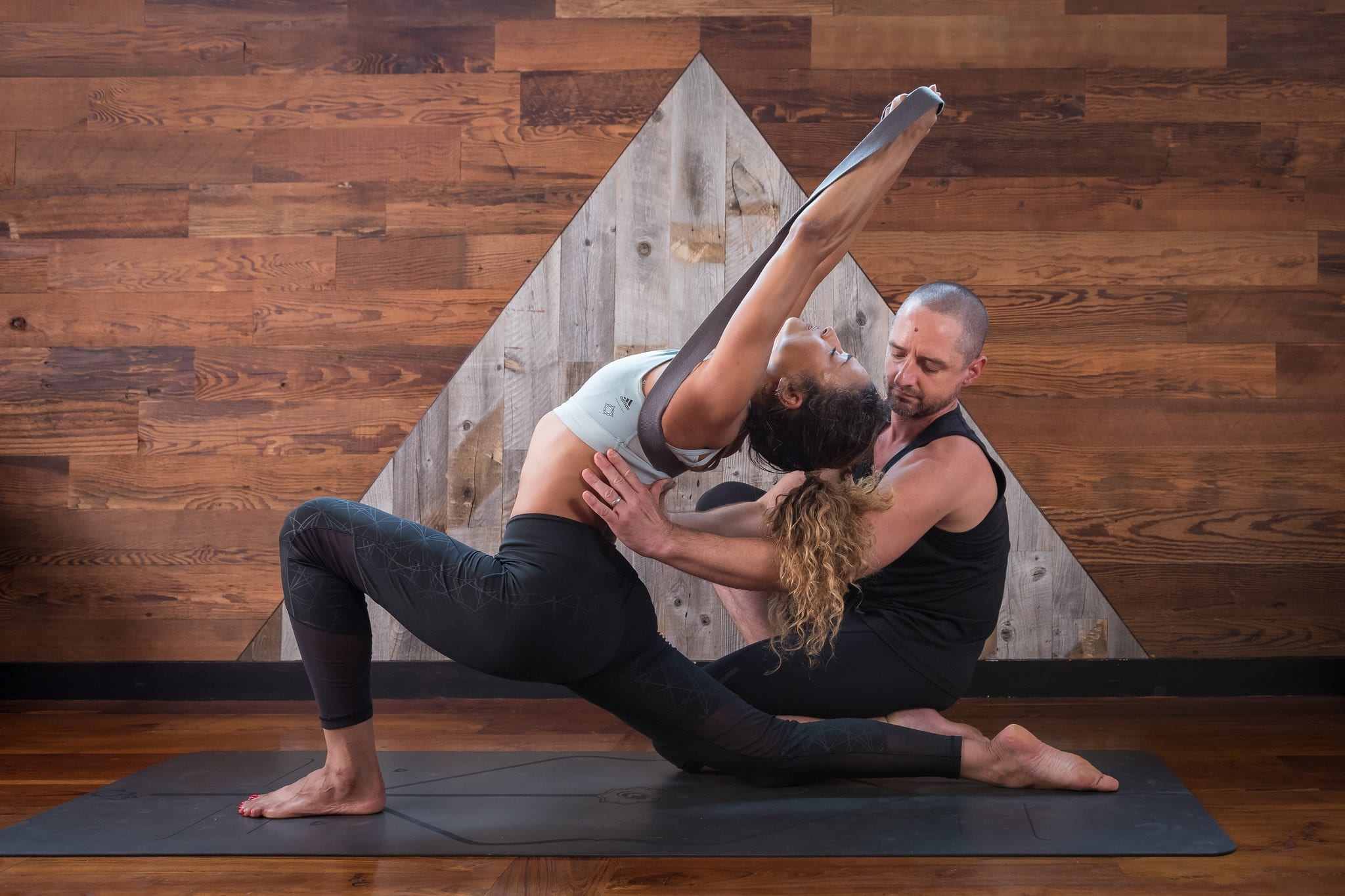
Noah is best known for his clear, precise and methodical teaching style, his tangible knowledge, and his ability to transmit with openness, curiosity, and wit. Find his classes on Wanderlust TV here.
Yoga props are great teachers. And just like a great teacher, props are extremely versatile and can meet our needs in any number of skillful ways; props can make a pose more accessible, provide support, and make a pose “easier.” They can give useful information and feedback to improve alignment. They can be used to increase load, activate muscular actions, and make a pose “harder.” At the end of the day, what can’t these fantastic tools do?
I greatly admire the innovation and creativity that B.K.S. Iyengar brought to the practice of yoga asana with props; he used simple everyday objects to enhance the poses and improve people’s experience. Similarly, we are each invited to use what is available to improve our practice. Exercise your creativity, think outside the box, and you may be surprised and delighted how the world around you gives you endless tools to enhance your practice.
Below are some of my favorite benefits from yoga props. Explore the possibilities and discover what works for you.
Support to grow.
“The yoga asana practiced with props is unique in that it is the only form of exercise which allows both action and relaxation simultaneously. It activates the muscles, tones the body’s organs, and relieves undue mental and physical stress or strain. Props help to increase flexibility and stamina and, at the same time, relax slack and tired muscles. They help to rejuvenate the entire body, without increasing physical fatigue.” B.K.S. Iyengar
On days when you need to conserve energy and increase the proportion of relaxation in poses, use props. This can be as simple as putting your hand on a block in Triangle Pose, (Trikonasana) rather than straining to reach the floor, or as complex as a restorative practice using bolsters, blankets, blocks, belts, chairs, the wall, etc.
One of my all time favorite supported inversions is Supported Shoulderstand (Salamba Sarvangasana). It’s delicious—you get all the sweetness of the inversion without needing to work so hard to actually get into the pose.
Trigger confidence.
“Students of yoga find the practice of asanas with props a very encouraging exercise. It gives them the confidence to attempt difficult asanas, and ensure correct practice. Props provide a sense of direction and alignment, and help to increase and enhance the understanding of each asana. They serve as silent instructors.” – B.K.S. Iyengar
Props can give you the support needed to practice those more difficult asanas. If you are not sure you can balance in handstand, Adho Mukha Vrkshasana, in the middle of the room, practice against the wall and the wall will have your back. If dropping back into Upward Bow Pose (Urdhva Dhanurasana) from Mountain Pose (Tadasana) seems too difficult, use the wall or the skillful assist of the teacher to learn to do this transition.
Align and customize.
“As I worked with people who were affected by illness or disease, I came to realize the value of props. I discovered that props helped to retain key movements and subtle adjustments of the body by providing more height, weight, or support. I also found that the use of props improved blood circulation and breathing capacity. This inspired me to create props adjusted to suit individual needs.” – B.K.S. Iyengar
Props can meet you where you are at and customize each pose for your proportions and abilities. Instead of using too much force to practice a pose and potentially compromising healthy mobility, practice with props so that in every pose and stage of your practice you are balancing mobility and stability with your capacity that day.
Your body is changing all the time; cultivate your discernment to know when a pose might be inviting injury onto yourself. Props often also add more points of physical contact in a pose, and every kinesthetic touch activates the nervous system and adds more awareness so that you can better feel if you are balanced or if you are not.
Activate to strengthen.
“A yoga prop is any object that helps to stretch, strengthen, relax, or improve the alignment of the body. It helps to sustain the practice of asanas for a longer duration, and conserves energy. These props allow asanas to be practiced in a relaxed way, balancing the body and mind actively as well as passively.” – B.K.S. Iyengar
I love using props to increase certain muscular activations in a pose and “make the pose harder” or progress the pose; squeeze a block between your inner thighs in Mountain Pose (Tadasana) to activate your hip abductors more, put a belt around your thighs and press out against it to activate your hip abductors more, use a blanket on the wood floor instead of your sticky mat to increase the isometric contractions required to maintain the pose or do a sliding drill to strengthen the concentric contractions.
In every one of these cases, the prop is not making the pose easier, but is targeting certain muscular actions to make you stronger. This kind of practice lets you target your weaknesses and build strength and awareness to create more overall balance in your body.
So go for it! Use props in all sorts of ways. Experiment in the laboratory of your practice and see what you discover.
Noah’s Class Packs Stable to the Core and Grab ‘n’ Go Vinyasa are now available on Wanderlust TV.
—
 Noah is the founder of Noah Mazé Yoga and YOGAMAZÉ in Los Angeles, California. He began practicing yoga at age 14, studying with Richard Freeman, Pattabhi Jois, and senior Iyengar yoga teacher Manouso Manos. Known for his clarity and precision, Noah presents students with opportunities to gain tangible knowledge, which they can immediately apply to improve their focus, strength, and technique.
Noah is the founder of Noah Mazé Yoga and YOGAMAZÉ in Los Angeles, California. He began practicing yoga at age 14, studying with Richard Freeman, Pattabhi Jois, and senior Iyengar yoga teacher Manouso Manos. Known for his clarity and precision, Noah presents students with opportunities to gain tangible knowledge, which they can immediately apply to improve their focus, strength, and technique.